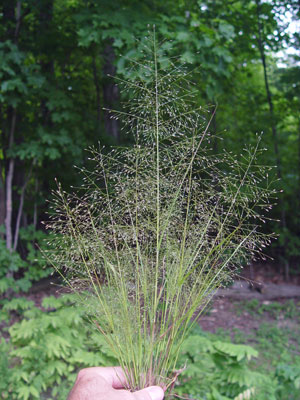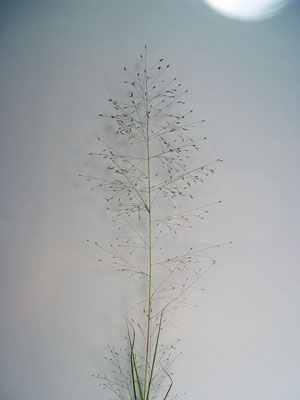DACF Home → Bureaus & Programs → Maine Natural Areas Program → Communities, Plants, and Animals → Rare Plants → Eragrostis capillaris

Eragrostis capillaris (L.) Nees
Tiny Lovegrass
- State Rank: SH
- Global Rank: G5
- State Status: Potentially Extirpated
Habitat: Dry sandy or rocky soils. [Old field/roadside (non-forested, wetland or upland); Dry barrens (partly forested, upland)]
Range: Southern Maine to Wisconsin, south to Georgia, Missouri, and Texas.
Aids to Identification: This annual grass is tufted and erect, growing to 20-50 cm. The leaves are 2-4 mm wide. It has large, diffuse inflorescences with 2-5 florets per spikelet. The grains have a groove running their entire length on one side.
Ecological characteristics: Known in Maine from open roadsides.

Phenology: Fruits August - October.
Family: Poaceae
Synonyms: None noted, though an alternate common name for this species is lace lovegrass.
Known Distribution in Maine: This rare plant has been documented from a total of 5 town(s) in the following county(ies): Androscoggin, Oxford, York.
Reason(s) for rarity: At northern limit of range.
Conservation considerations: This grass has been found along roadsides, but its habitat requirements, including need for disturbance, are not well known.